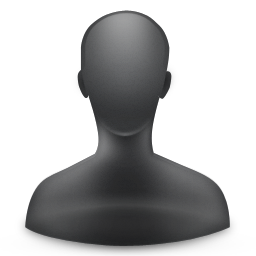Welcome to Schoolessons
Ask A Teacher
- Home
- Ask A Teacher
Questions in "Biology"
What are the methods used by plants to get rid of excretory products
Plants use the following ways to get rid of excretory products: (1) Plants get rid of gaseous wasts products through stomata on leaves and lenticels in stems. (2) Plants get rid or wastes by secreting them in the form of gums and resins. (3) Plants excrete some waste substances into the soil around them. (4) Plants get rid of stored solid and liquid waste by shedding of leaves, peeling of bark and felling of fruits. (5) Plants get rid of excess water by transpiration.
 Read more
Read more
Describe the structure and functioning of nephrons
Nephrons are the filtration units of kidney. Each kidney has a large no. of nephrons. The process starts with filtration of urine.  Cup-shaped structure associated with capillaries is called Bowmans capsule. This collects filtered urine. As this urine flows through the tubular part of nephron, reabsorption of glucose, amino acids, salts and water take place. The amount of water and other substances reabsorbed depends upon how in excess they are present in the body.The urine formed enters into a long tube called ureter through the collecting ducts of kidney. Then urine is collected in urinary bladder.
Cup-shaped structure associated with capillaries is called Bowmans capsule. This collects filtered urine. As this urine flows through the tubular part of nephron, reabsorption of glucose, amino acids, salts and water take place. The amount of water and other substances reabsorbed depends upon how in excess they are present in the body.The urine formed enters into a long tube called ureter through the collecting ducts of kidney. Then urine is collected in urinary bladder.
 Read more
Read more
I don"t get the chapter reaching the age of adolescence . WHY ?
Chapter is updated now
 Read more
Read more
What is mean by evolution?
Biological evolution is defined as any genetic change in a population that is inherited over several generations. These changes may be small or large, noticeable or not so noticeable.
IS HUMAN CELLS HAVE CELL WALL? IS ANIMALS & PLANTS HAVE NUCLEAR MEMBRANE ?
All animal cells are multicellular. They are eukaryotic cells. Animal cells are surrounded by plasma membrane and it contains the nucleus and organelles that are membrane bound.Animal cells are eukarytoic. Animal cells are have outer boundary known as the plasma membrane. The nucleus and the organelles of the cell are bound by a membrane. The genetic material (DNA) in animal cells is within the nucleus that is bound by a double membrane. The cell organelles have a vast range of functions to perform like hormone and enzyme production to providing energy for the cells. Plant cell are eukaryotic cells, they ...
 Read more
Read more
Can you please say scientific names of 25 common animals and 25 common plants
Ant____ Hymenopetrous formicidae Bison ____-(Buffalo) Bison bonasus Bear____ Ursidae carnivora Camel___Camelus camelidae Panda ____Alurpoda melanoleuca Cat ____Felis catus Pig____Artiodactyla suidae Chameleon___ Chamaele ontidate Porcupine___Hystricomorph hystricidae Cheetah ___Acinonyx Jubatus Rabbit ____Leporidae cuniculas Chimpanzee___Pan troglodytes Rabbit___Rodentia rattus Cobra ___Elapidae naja Rattle Snake ____Cortalus horridus Reindeer___Rangifert tarrandus Whale Shark__Rhincodon typus Horse___Eqqus caballus Zebra___Equidae burcheliarrandus Crocodile___Crocodilia niloticus Rhinoceros ___Perrissodanctyl rthinocerotidae Deer ____Artiodactyl cervidae Scorpion____Archinida scorpionida Dog ___Cannis familiaris Sea Horse___Hippocampus Syngnathidae Dolphin ___Delphinidae delphis Seal___Innipedia phocidae Elephant __Proboscidea elephantidae
 Read more
Read more
Why does a cactus plant have fleshy leaf like photosynthetic branches?
Cacti stems store water. The stems have thick outer layers and a waxy coat to prevent water loss.The ridged stems expand to store water, and shrink as the water level reduces.
 Read more
Read more
Explain about the basic components of a cell.
The cell is the smallest entity that still retains the characteristics of life. 2. All cells have three basic parts: a. A plasma membrane separates each cell from the environment, permits the flow of molecules across the membrane, and contains receptors that can affect the cell’s activities. b. A DNA-containing region occupies a portion of the interior. c. The cytoplasm contains membrane-bound compartments (except bacteria), particles, and filaments all bathed in a semi fluid substance. 3. Eukaryotic cells are defined by their possession of a membrane-bound nucleus. 4. Prokaryotic cells have no defined nucleus; the only representatives are bacteria.
What is nectar?
Nectar is a secretion produced by plants in glands called "nectaries."Nectar is produced by glands called nectaries. Nectaries can be located on any part of a plant, but the most familiar nectaries are those located in flowers (called "floral nectaries"). Depending on the species, a flower's nectaries can be located on its petals, anthers, stamens, sepals, pistils, styles, ovaries or other parts of the flower.
 Read more
Read more
Viruses are considered as being on the border line between living and non-living organisms, Why?
A virus has a very simple composition. It has a protein sheath inside which there is a strand of DNA. A virus shows some properties akin to living organisms. However, unlike other organisms, they show some properties that are akin to non-living things. They can undergo crystallization and in that form, survive for billions of years. They can survive very high temperatures, freezing cold and ultra-violet radiation in space vacuum, in crystallized form.
 Read more
Read more
Search
Categories
Solved Questions
-

Why are oceans are blue in colour?
May 9, 2015, 1:59 p.m. Ratings : 5.0 -

Name the principle on which a rocket works.
Oct. 7, 2015, 8:47 p.m. Ratings : 5.0 -

ABCD is a square and ABE is an equilateral triangle outside the square. Prove that angle ACE =half of angle ...
Oct. 12, 2015, 7:04 p.m. Ratings : 5.0
